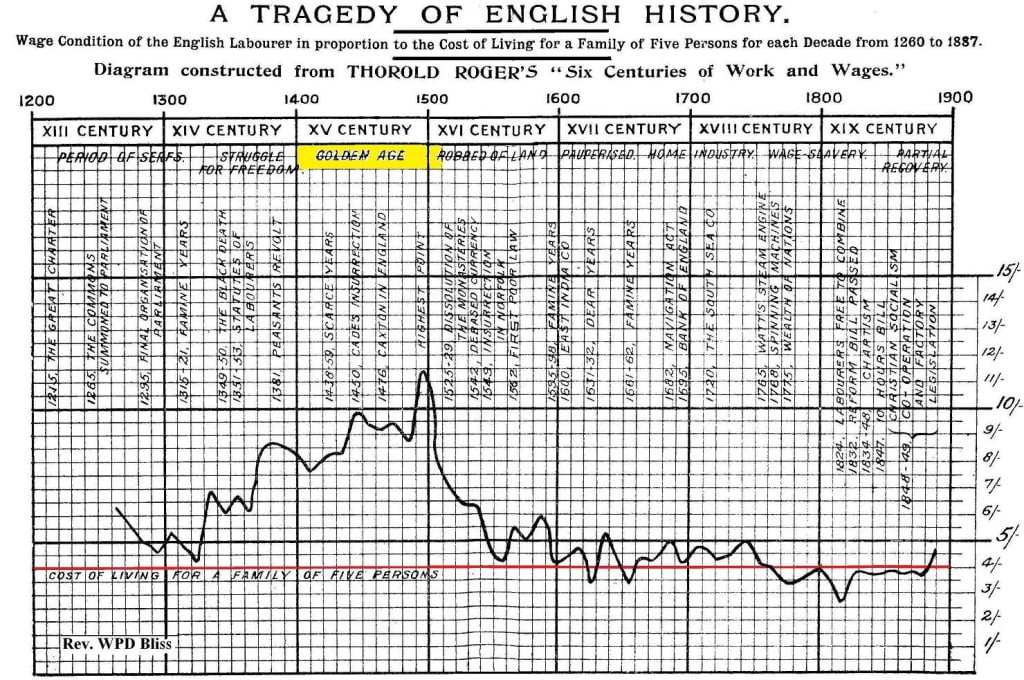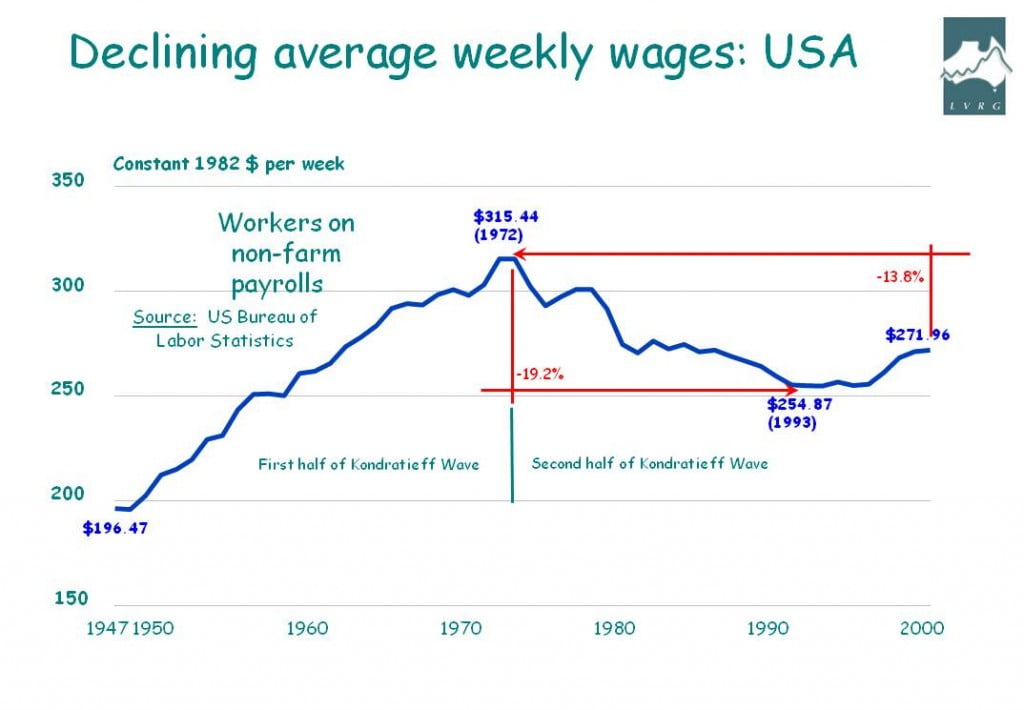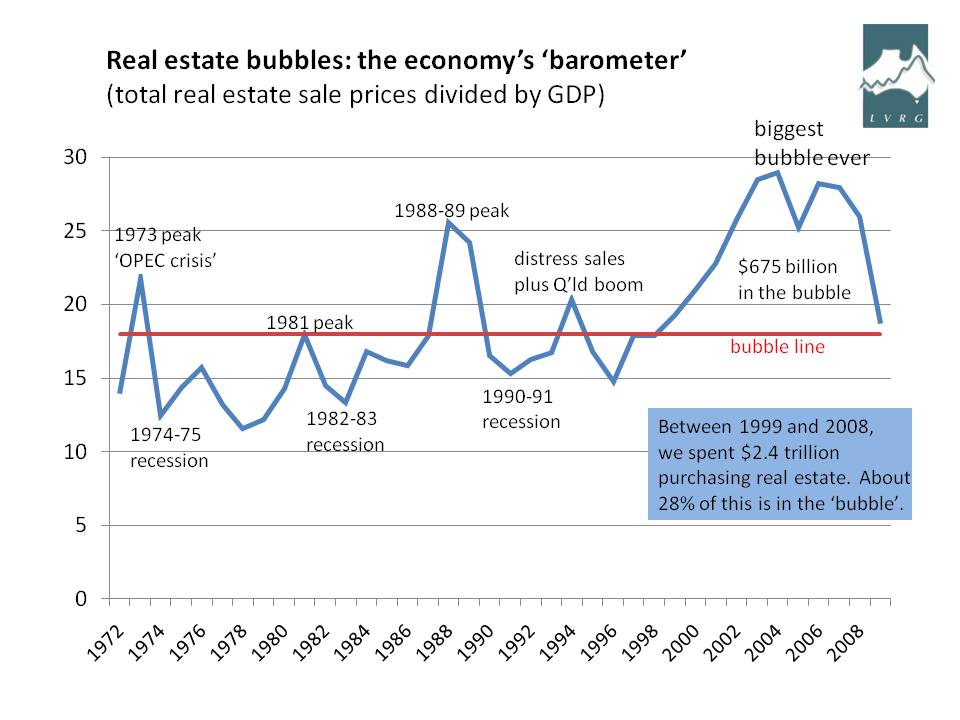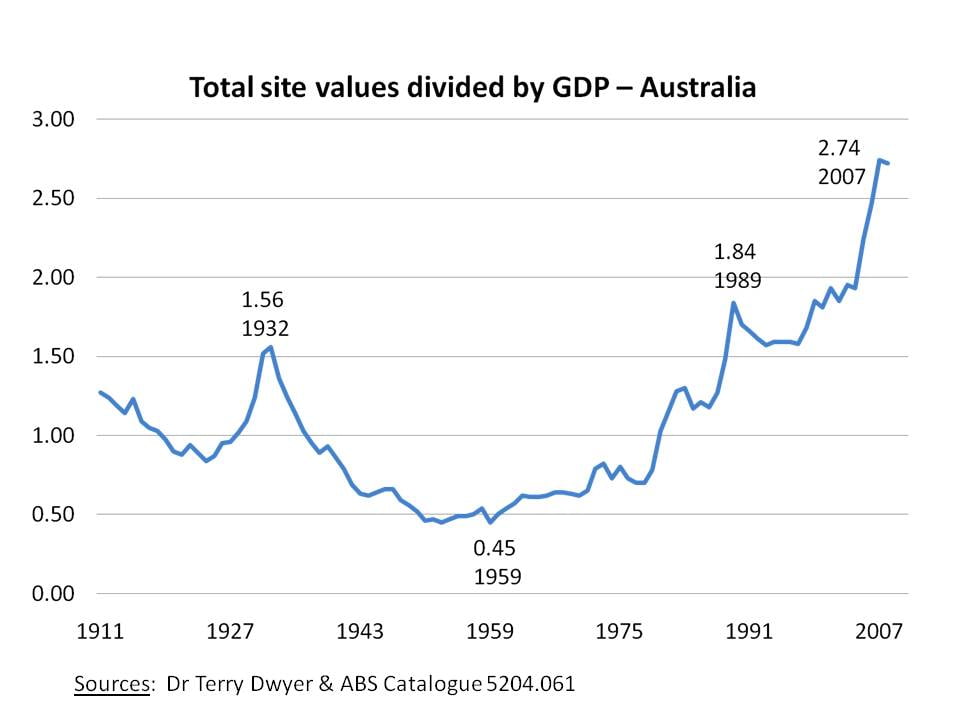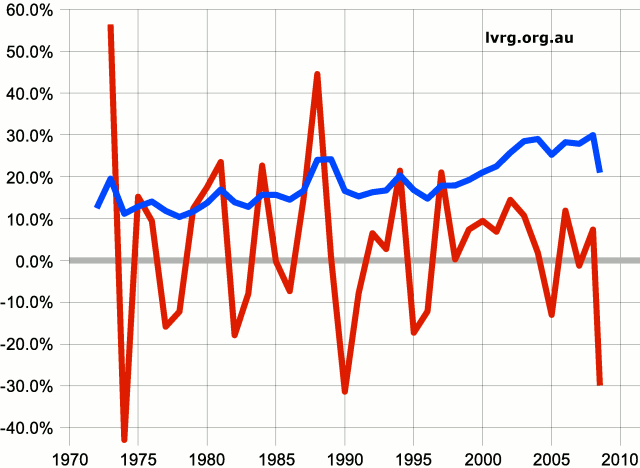DEPRESSIONS 101.0
Let’s say labour joins with capital and land to produce wealth, and that the locational rent of land arises as a by-product, simply from the existence of the surrounding community and its infrastructure.
Say, for some reason or other, you wanted to create an economic depression. How would you go about doing it? OK, let’s tax labour and capital to reduce their wages and profits, respectively. But don’t collect the publicly-generated land rent for government – because we’re trying to get a depression happening, remember?
So you fine labour and capital for working, but you don’t capture the land rent, is that it? Yes, but that’s only the beginning. It’s what happens next with the publicly-generated rent you’ve left in private hands that’s the most important consideration. That’s because if you’re really trying to create economic depression, you’ve got to set up a vast disparity in wealth, and to squeeze the middle class and the poor. You choke off demand by putting them into such debt that it can’t be repaid.
Now, as super-wealthy people own much more valuable property, sometimes mineral and spectrum licenses, they also control much more of the nation’s economic rent. That means that every red cent they pay in taxation is clawed back by the increases in land rent which is then capitalised back into the value of their land and natural resources. They may pay more tax than the poor, but they’ll certainly be able recoup far more than that amount via their escalating land values. By fully privatising the economic rent of their land, mining and spectrum rights, they simply continue to translate that value into the value of ‘their’ assets.
But renters can’t do this, because they get no land rent. See? They actually pay the land rent to their landlords. They also pay taxation, so they’re whacked doubly. Similarly, the owners of only one home have control of relatively little land rent, so they can’t claw back much of their taxation. Yet, curiously, they often side with the 0.1% for the following reasons.
What will homeowners, maybe even some renters, try to do? The middle class will look at what’s happening, and realise that they need to get off this taxpaying treadmill and become asset rich, too. They must become landlords. So they invest in properties on which they will not only get the rent for the improvements, but the rent of land that goes uncollected by government. Not only that, but if they can ‘negatively gear’ their properties, such that the income they receive is less than the interest they’ll pay, the tax system will help them buy these properties! What does it matter if they get deeply into debt? Ever-increasing asset values will fix that. Er, it will … won’t it?
Enter the FIRE sector of the economy, this is, finance, insurance and real estate. It doesn’t create wealth, it diverts it away from the public by privately capturing the land rent as mortgagee. Whilst this segment can sometimes serve the productive side of the economy, it actually prefers to serve the destructive side, to create recession or economic depression. In the latter mode, it becomes a parasite. Not only does it take over its host’s body, but it sinks probes deeply into its brain, to control the brain, convincing itself that the FIRE sector is the most important part of the economy*, and that the property speculator plays an heroic part. Just listen to rent-seeking banks bleat about their own importance! Why, they’re providing housing accommodation aren’t they? [* Metaphor, courtesy of Michael Hudson.]
So, now that we have everyone but the poor engaged in pumping up real estate and sending productive industry offshore to where land prices, taxation and labour are all much lower, the depression is now well under way. We simply wait for the property bubble to burst. The ship, as they say, must hit the span.
The final tool in our kit is the politician. People will look to him to remedy the depression – but we have this one covered, too. Being an ‘investor’ himself, he has come under the spell of the FIRE parasite and is busy singing its praise. For the sake of keeping personalities out of things, let’s call him, Barack Cameron. We must bail out the FIRE sector, proclaims Barack to his fellows. The Great Recession is only a temporary phenomenon! In fact, we must do everything we can to look after the FIRE sector, because it is much more important than people or the economy! We must not, repeat not under any circumstances, free up labour and capital by far greater capture of our economic rents to get the economy back to work! What sort of idiot would want to suggest that?
Is this is a fairy story? Economic depressions can’t possibly happen this way? If they did, they could surely be cured simply by switching the revenue source from taxes to rents? It can’t be right, because professors of economics and the media constantly advise “there are no simple solutions, no silver bullets” …. ?
______________________________________________________________________
GLOSSARY OF USEFUL TERMS IN A DEFLATION
Ploticians – members of political parties who plot against the interests of the people, choosing rather to serve the interests of the party, landlords and other real estate lobbyists, instead of their constituents.
Conomists – conmen and women who work with ploticians to convince people that labour and capital have opposing interests, and who okay taxing the earned incomes of both – instead of untaxing them and capturing publicly-generated site rents for necessary revenue.
Landlords – the real lords of the land (90% of those in Business Review Weekly’s “Rich 200” list, forget that 26% found in Wiki!) who have maximized the great privileges granted under the tax system to help pay for their real estate purchases at other people’s expense – then claw back every red cent of the taxes they’ve ever paid, per medium of increases in the value of their real estate ‘assets’.
TenANTS – people deemed to be insignificant little insects who are unable to claw back all their taxation through uplifts in their land values, as landlords do.
Middle Class – those who aspire to become landlords so they, too, can claw back their taxes, but get it in the neck at each and every economic downturn. (Not to be confused with the real landlords in BRW’s “Rich 200” list!)
Voters – those who don’t seem to regret subjugating their interests to those of ploticians, conomists and landlords.
Democracy – the system in which all the abovementioned pathologies are rolled together and permitted to create economic recessions and depressions at regular intervals.
Tax Reform – the unthinking alternation of emphasis between (A) taxes on incomes and (B) taxes on purchases. These are usually accompanied by the winding back of land-based revenues.




